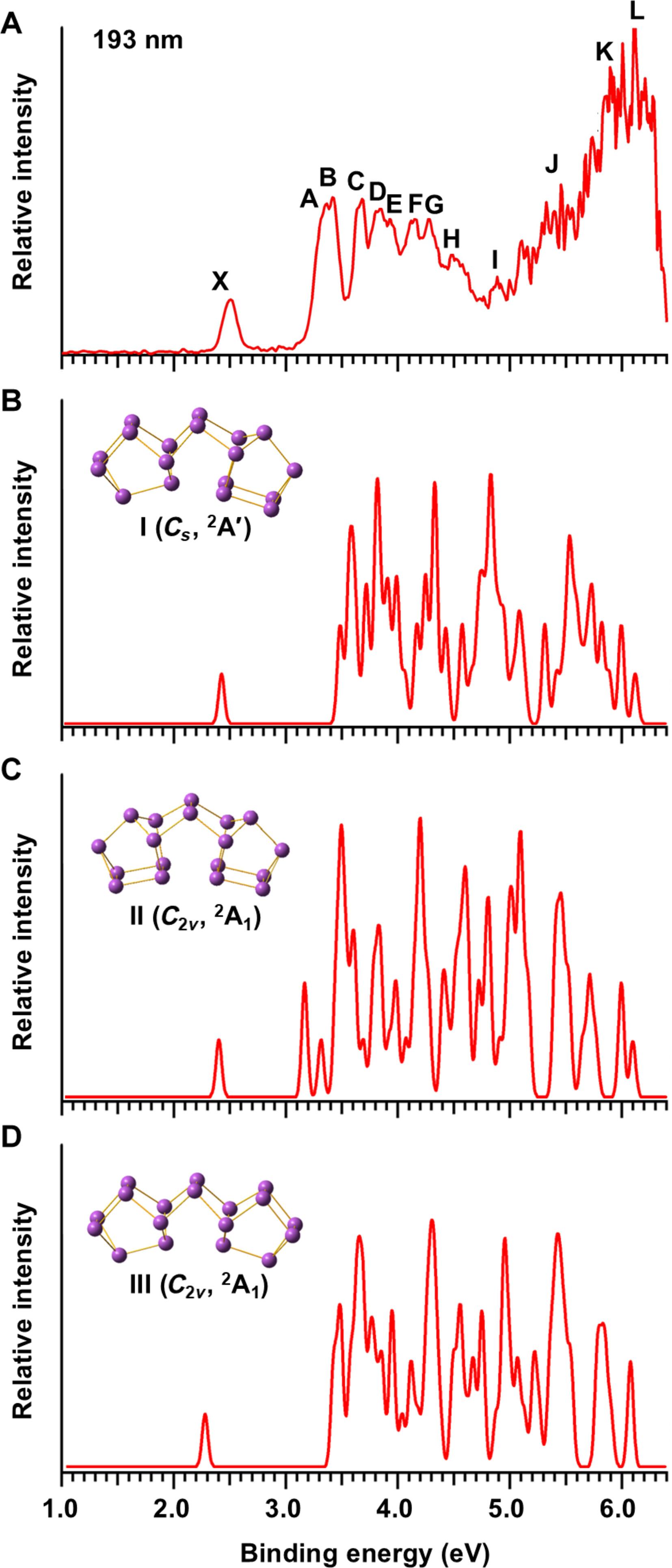关于 Bi18- 团簇的显著抗氧化性。
IF 12.5
1区 综合性期刊
Q1 MULTIDISCIPLINARY SCIENCES
引用次数: 0
摘要
研究发现,Bin- 团簇(n = 2 至 30)与 O2 的反应性呈现偶数-偶数交替。开壳偶数大小的 Bin- 团簇比闭壳奇数大小的团簇更具反应性,只有 Bi18- 除外,它对 O2 没有表现出明显的反应性。我们对 Bi18- 的结构和键合进行了研究,以了解其显著的抗氧化性。我们发现,Bi18- 最稳定的结构由两个 Bi8 笼和一个 Bi2 二聚体组成,其中每个原子都与三个相邻原子成键。化学键分析表明,每个 Bi 利用其三个 6p 电子与相邻原子形成三个共价键,从而形成一个没有任何悬空键的 Bi18- 簇。我们发现,坚固的 Bi18 框架和完全非局域化的非配对电子是 Bi18- 对 O2 具有惊人惰性的原因。Bi18 框架与 Hittorf 磷的框架相似,这表明我们有可能创造出具有有趣结构和特性的铋纳米簇。本文章由计算机程序翻译,如有差异,请以英文原文为准。

On the remarkable resistance to oxidation by the Bi18− cluster
The reactivity of Bin− clusters (n = 2 to 30) with O2 is found to display even-odd alternations. The open-shell even-sized Bin− clusters are more reactive than the closed-shell odd-sized clusters, except Bi18−, which exhibits no observable reactivity toward O2. We have investigated the structure and bonding of Bi18− to understand its remarkable resistance to oxidation. We find that the most stable structure of Bi18− consists of two Bi8 cages linked by a Bi2 dimer, where each atom is bonded to three neighboring atoms. Chemical bonding analyses reveal that each Bi uses its three 6p electrons to form three covalent bonds with its neighbors, resulting in a Bi18− cluster without any dangling bonds. We find that the robust Bi18 framework along with the totally delocalized unpaired electron is responsible for the surprising inertness of Bi18− toward O2. The Bi18 framework is similar to that in Hittorf’s phosphorus, suggesting the possibility to create bismuth nanoclusters with interesting structures and properties.
求助全文
通过发布文献求助,成功后即可免费获取论文全文。
去求助
来源期刊

Science Advances
综合性期刊-综合性期刊
CiteScore
21.40
自引率
1.50%
发文量
1937
审稿时长
29 weeks
期刊介绍:
Science Advances, an open-access journal by AAAS, publishes impactful research in diverse scientific areas. It aims for fair, fast, and expert peer review, providing freely accessible research to readers. Led by distinguished scientists, the journal supports AAAS's mission by extending Science magazine's capacity to identify and promote significant advances. Evolving digital publishing technologies play a crucial role in advancing AAAS's global mission for science communication and benefitting humankind.
 求助内容:
求助内容: 应助结果提醒方式:
应助结果提醒方式:


